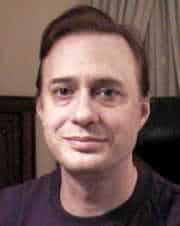|
This rather brings to mind a syndrome that sometimes occurred when an old Arpanet mailing list got gatewayed to a Usenet newsgroup. After a little while, some Usenet novice would commit some faux pas, a furious Arpanaut would flame violently about how Usenet was nothing but bozos who didn’t understand How Things Should Be Done and the gatewaying was a stupid idea, and the list maintainer would quietly observe that the gatewaying had indeed produced problems, but it was also producing most of the real content… – Henry Spencer; Mail Relays; 25 Oct 1990. |
In the early days of the Usenet, newsgroups were collected into a few broad hierarchies, beginning with “net.”, “fa.”, and “mod.”.
The first Usenet hierarchy was “net.”, designed for groups that communicated about the network itself. The first non-technical newsgroups were “net.jokes” and “net.rumor”. Not long afterwards the groups “net.joke”, “net.bizarre”, “net.flame”, and “net.gdead” were added.
Additional groups were occasionally created for discussion on subjects that would sometimes overwhelm other groups, such as “net.startrek” and “net.abortion”. The group “net.women.only” was created, but didn’t generate enough traffic to last.
From the development of the first “net.” newsgroups, a great sustaining force of the Usenet has been its ability to provide self-help technical assistance. These early newsgroups helped the builders of the Internet share information, get help with problems, and improve the Internet’s operation. The modern equivalent of these newsgroups are in the “comp.” hierarchy.
In 1980, Mark Horton, a graduate student at the University of California in Berkeley, added his site to the Usenet network and started sending some of the ARPANET mailing lists to the Usenet. When the “ucbvax” computer joined the network shortly thereafter, the hierarchy “fa” was established, standing for “from ARPANET”. At first the ARPANET lists were distributed read-only on the Usenet, but later the connection was made two-way.
Like other common, public spaces, early newsgroup traffic was as varied as the people on the Usenet, and newsgroups were occasionally overwhelmed with inappropriate material and off-topic postings. To address this problem the “mod.” hierarchy was created for groups that were “moderated” by a person who first reviewed and filtered all message postings to try and keep the traffic on-topic and useful. Among the first moderated groups were “mod.announce” and “mod.newprod”, used to distribute information on commercial computer products.
